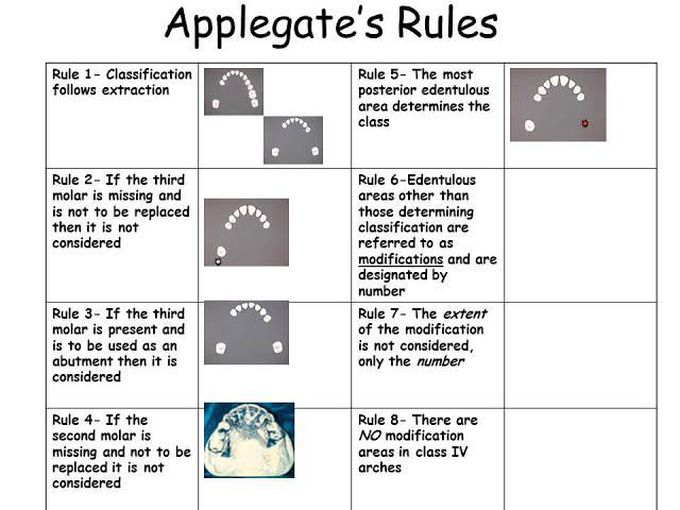


The Applegates rule
The Kennedy classification would be difficult to apply to every situation without certain rules for application. Applegate has provided the following eight rules governing the application of the Kennedy method. RULE 1: Classification should follow rather than precede any extractions of teeth that might alter the original classification. RULE 2: If a third molar is missing and not to be replaced, it is not considered in the classification. RULE 3: If a third molar is present and is to be used as an abutment, it is considered in the classification. RULE 4: If a second molar is missing and is not to be replaced, it is not considered in the classification (for example, if the opposing second molar is likewise missing and is not to be replaced). RULE 5: The most posterior edentulous area (or areas) always determines the classification. RULE 6: Edentulous areas other than those determining the classification are referred to as modifications and are designated by their number. RULE 7: The extent of the modification is not considered, only the number of additional edentulous areas. RULE 8: There can be no modification areas in Class IV arches. (Another edentulous area lying posterior to the “single bilateral area crossing the midline” would instead determine the classification).

